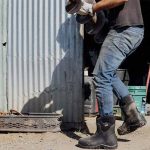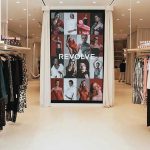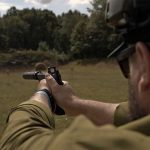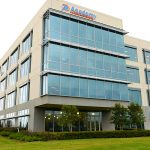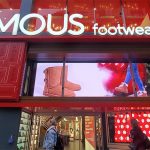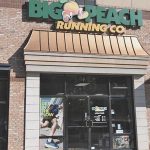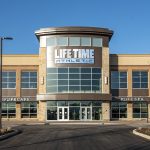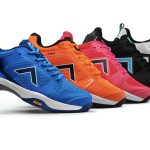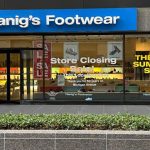Delta Apparel, Inc. reported financial results for the three-month transition period ended Sept. 28. Net sales were $122.6 million versus $130.1 million in the comparable prior year period. Net earnings were $0.6 million, or 7 cents per diluted share, compared with $3.6 million, or 41 cents per diluted share, in the prior year quarter.
The transition period was necessary to accommodate the change in the company ’s fiscal year end from June to September; therefore starting the 2014 fiscal year on Sept. 29, 2013. Transition period comparisons are made against the fiscal 2013 first quarter ended September 29, 2012.
“At the end of August we completed the acquisition of Salt Life and updated our bank loan to support that acquisition. Salt Life continues to gain traction in its geographic distribution with products being placed in key independent accounts and major retailers along the West Coast and in Hawaii.”
While demand was strong at the start of the period, weakness in retail sales caused a decline in the company’s basic undecorated tee business as the quarter progressed. This weakness, along with continued softness in Soffe sales, was the primary reason for the decline in revenue and lower profitability. In addition, the company’s operating profit was unfavorably impacted in the transition period by a number of unusual items, including costs associated with the shutdown of its Wendell screen print facility, expenses associated with the acquisition of Salt Life, higher than normal bad debt expense and the recording of a contingent liability associated with certain legal matters in California.
Basics Segment Review
During the period, sales for Delta’s basics segment were $62.3 million compared with $66.5 million in the prior year period, a reduction of 6.4 percent. While sales of undecorated tees started strong in July, slower retail traffic and an earlier than expected build-up of inventories in the retail sector resulted in price discounting to drive volume, and ultimately lower than expected sales of undecorated tees as the quarter progressed. Sales of private label products were also unfavorably impacted as customers shifted callouts to balance inventory from the lower sales at retail. Operating earnings, inclusive of the additional bad debt expense and legal accruals, for the transition period were $0.2 million compared to $3.2 million in the prior year September quarter.
Branded Segment Review
With the exception of Soffe, all branded segment businesses met or exceeded revenue and profit expectations. Branded segment sales for the period were $60.2 million, down 5.2% from $63.5 million in the comparable prior year period. The primary reason for the decrease was a 28 percent decline in Soffe sales, which was somewhat offset by strong revenue growth in the other brands. Junkfood sales increased by 14 percent with continued strong buy-in from upper-tier retailers and specialty stores. Art Gun continued its rapid growth pattern with a 115 percent sales increase over the comparable prior year period. Salt Life revenue growth exceeded expectations, with sales up 44% over the prior September quarter. The branded segment’s operating earnings were $0.4 million for the period compared to $2.7 million for the comparable prior year quarter.
Robert W. Humphreys, Delta Apparel, Inc.’s chairman and CEO, said that while the transition period did not produce the financial results the company had anticipated, it was one in which Delta concluded many of the consolidation and expansion projects it has pursued over the past year.
“We also completed the consolidation of our college bookstore operations into The Game, which should allow us to operate more efficiently and better serve our customers with one brand. In regard to our collegiate offerings, our new Made-in-America apparel line, ‘American Threads by The Game’, which was introduced this season, appears to be receiving good feedback from college students who recognize and appreciate the importance of apparel made in the U.S. We look forward to evaluating the program further as we receive more sell-through data in future quarters.”
“At the end of August we completed the acquisition of Salt Life and updated our bank loan to support that acquisition. Salt Life continues to gain traction in its geographic distribution with products being placed in key independent accounts and major retailers along the West Coast and in Hawaii.”
“In September we brought on Rod McGeachy as President of the Soffe division. Calling on his broad range of executive experience in the apparel business, Rod is now leading the brand development, brand positioning and marketing strategies to return Soffe to its historical performance levels.”
Humphreys concluded, “Most of the expense for these initiatives was recognized during the transition period, and we anticipate the next several quarters will be ones in which we will begin to see the results of our efforts. While the current economic environment for apparel is more challenging than we anticipated, we believe the steps we have taken position us to meet our guidance for fiscal year 2014.”
Fiscal 2014 Guidance
The company believes that the guidance previously provided for the fiscal year ending September 27, 2014 can be achieved. Based on anticipated net sales growth, higher unit volume leveraging fixed costs, and greater productivity from the recently completed initiatives, the company believes revenue will be in the $500 million to $510 million range and earnings should be $2.00 to $2.10 per diluted share.

